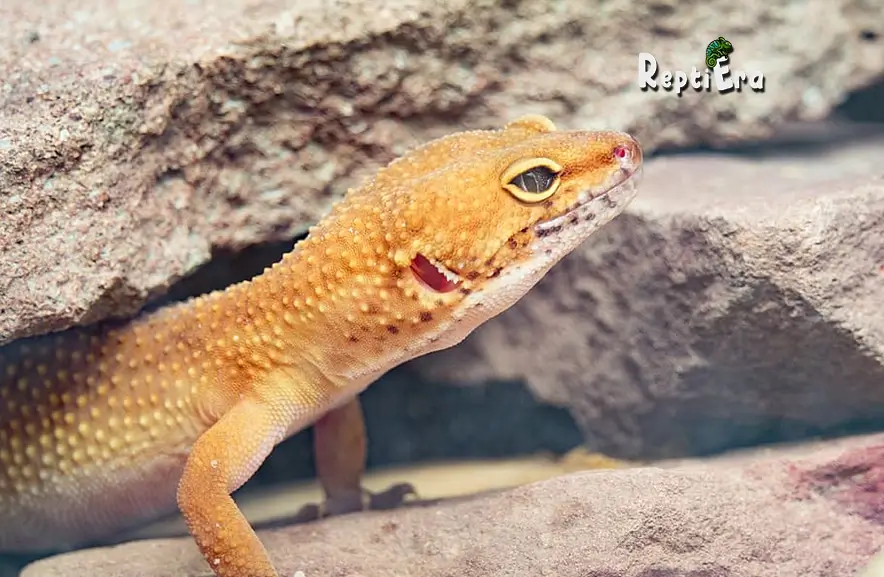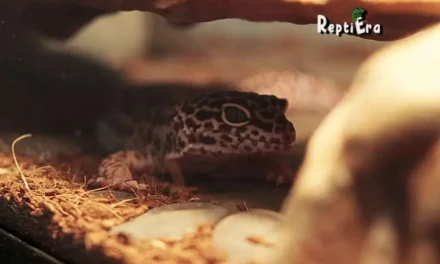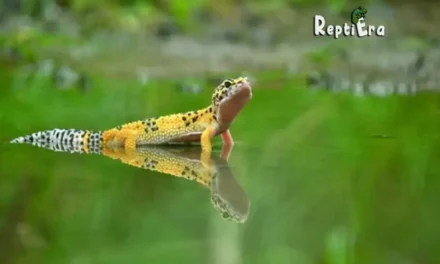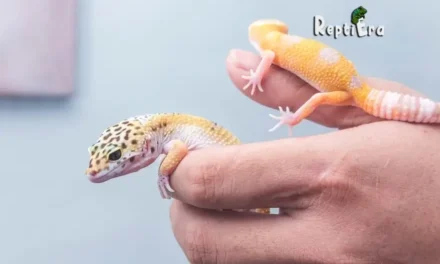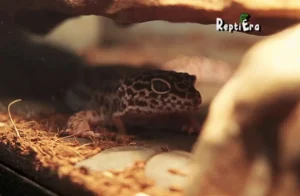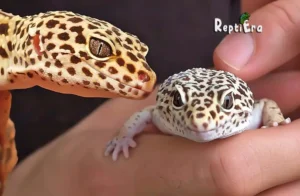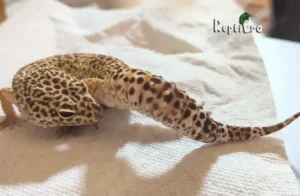When planning a weekend getaway or a big move across the country, as a pet owner, it’s crucial to consider your leopard gecko’s well-being. These little creatures are happiest when left alone in their cozy homes, thriving on minimal maintenance. However, life sometimes requires us to take our spotted friends on a journey, whether it’s a short trip to the vet or needing a ride for a longer duration. Typically, they can handle being away from their familiar environment for 2-3 days without any harm. As you prepare, remember that while it might be a small change for you, it’s a significant shift for your gecko.
Table of Contents
How to Travel With a Leopard Gecko
Travelling with your spotted friend, a leopard gecko, can be a smooth experience with the right approach. If you’re planning a trip for a few days or longer, beyond a usual weekend vacation, it’s vital to ensure your gecko can survive and thrive. When relocating far away or if it’s impractical to leave them behind, consider asking a friend or a pet sitter to come by and check on your reptile child. They will need to provide water, clean the waste from the tank, and ensure proper feeding.
Leopard geckos can generally survive without food for up to two weeks, but we recommend not going more than three days without feeding. They need water every 24 hours to stay hydrated. If human friends or sitters can’t be found and you must bring your gecko along, know that while they prefer to stay at home, they can tolerate a short trip of less than three travel days. Always take necessary precautions to ensure a safe and stress-free drive for your gecko.
How To Transport A Leopard Gecko
Leopard geckos are not particularly fond of changes in their environment, and moving them can be quite stressful. The best alternative is often to avoid travelling with your gecko, but sometimes, taking your little buddy along is unavoidable. Thankfully, there are different ways to transport your gecko successfully. Whether you choose to travel by plane, car, or train, the requirements for a safe and comfortable experience remain consistent. It involves thorough research and meticulous planning, ensuring that every aspect of the journey, from the mode of transportation to the travel carrier, aligns with the needs of your gecko. By addressing these factors, you can make the journey less daunting for both you and your pet.
Step 1: Choose A Travel Carrier
The first and most important step in travelling with your leopard gecko is selecting a sturdy and secure travel carrier with proper ventilation. While you might choose to modify your gecko’s regular enclosure, it’s crucial to make changes to make it safer for travel. This includes removing loose substrate to prevent it from sliding and potentially smothering your Leo, or causing them to accidentally inhale or ingest it.
Objects and décor pieces that could move or fall over should also be taken out to prevent accidents and injuries. If possible, securely attach a heavy hide for your gecko to retreat into if they feel stressed. Alternatively, you can opt for a small container, such as a large Tupperware, which you can purchase online for transporting small pets. Ideally, the space should be adequate for your gecko to move and stretch without too much room to tumble during a sharp turn or if you hit a bump. It’s important to ensure there are enough ventilation holes for air, but not so big that your lizard could escape.
Step 2: Familiarize Your Gecko With Their Travel Carrier
When using a newly purchased travel carrier or a container that your gecko is not yet familiar with, it’s crucial to allow them time to become familiar with the space they’ll be travelling in. This can be achieved by gradually introducing them to it over a few days before your adventure. Start by placing your gecko inside the carrier for short periods, like just a few minutes, and then increase this time to around 30 minutes. This approach helps make your gecko comfortable with their new travel setup, significantly minimizing their stress levels throughout the journey.
Step 3: Line The Bottom
To stabilize your gecko and prevent them from sliding around during travel, it’s a good idea to line the bottom of their container with a material that provides a firm grip. A great option is a non-toxic shelf liner, known for its effectiveness. Alternatively, paper towels can be used, as they offer a textured surface suitable for your gecko’s little feet. This simple step can make a significant difference in ensuring your gecko’s comfort and safety on the move.
Step 4: Monitor Temps
When it comes to managing the temperature during your trip, especially considering the weather and distance, you need to take specific measures to control it, ensuring it doesn’t fall below 65 degrees or rise above 90 degrees Fahrenheit. In hot weather, keep the space cool by running the air conditioning in your car, but avoid placing the carrier directly under the vent to prevent your gecko from getting too cold.
Conversely, when it’s cold outside, maintain a comfortable environment in your car by using the heat. As an additional tip, you can use a heating source like a heating pack or hand warmers to provide warmth. Wrapping the carrier in a towel or blanket can create an insulated and cozy space. This not only keeps your gecko warm but also shields them from flashing lights and outside stimuli that could potentially bother them, helping to keep their stress levels low.
Step 5: Pack All Of The Essentials
When getting ready for transport with your leopard gecko, it’s a good idea to gather all the necessary items to ensure its well-being. Whether it’s shorter trips or longer journeys, being prepared for unexpected situations starts with a thorough checklist. Food and water are paramount; pack their regular food along with supplements and a dish for easy feeding.
Heating sources are crucial for maintaining ideal travel conditions; include heating pads or hand warmers to keep them warm. A thermometer is essential to monitor the temperature inside the travel carrier, ensuring a comfortable range for your pet. Blankets or towels create a cozy, safe environment inside the carrier, with additional covering to minimize stimulus for your Leo.
Don’t forget cleaning supplies like paper towels to maintain cleanliness. In case of emergency, having contact information for a reptile veterinarian is vital, ensuring you’re covered for any emergencies or concerns. If you’re staying overnight, overnight equipment such as a UVB source, basking lamp, and a hideout ensure a comfortable overnight setup. For powering these, a USB port or cigarette lighter adapter can be handy in your car. Remember, having these essential items for your trek keeps your gecko happy and healthy. It’s better to be over-prepared than under-prepared for any situation.
Step 6: Secure Their Carrier
unit or cage effectively. It should be strapped firmly to a seat or contained in a way that prevents movement. A great place for this is on the passenger floor, as it reduces the risk of the carrier being knocked off the chair if you have to slam on the brakes suddenly.
Additionally, having the carrier on the passenger floor allows you to check on your gecko often during the travel, ensuring they are safe and not overly stressed. Properly securing their carrier is crucial for their safety and your peace of mind while on the road.
Step 7: Consider Their Ears
When travelling with your gecko, it’s essential to prevent exposure to unnecessary noise and stimuli that could stress them. Blasting loud music or driving with the windows down can create an unsettling environment for them. Instead, maintain a calm and peaceful environment by listening to tunes at a reasonable volume and keeping the windows rolled up.
You can also cover the carrier with a blanket or towel to block out flashing lights and distractions that could bother your gecko. This approach, as mentioned above, will significantly reduce their stress and create a more comfortable journey for your scaly companion.
Step 8: Minimize Stops
When you’re able to, it’s best to keep the number of stops to a minimum while travelling with your leopard gecko. The sooner you reach your destination, the quicker your gecko can return to their usual habitat, where they are happier.
Plan your trip to ensure a smooth journey with as few interruptions as possible. This careful planning helps in reducing the stress on your gecko and ensures they remain comfortable throughout the travel. A well-thought-out route with minimal stops not only benefits your gecko but also makes the journey more relaxing for you. Remember, a happy gecko makes for a peaceful trip, so thank yourself for the extra effort in planning!
Step 9: Stick to the Road
When travelling with a leopard gecko, adopting a ‘less is more’ approach can be better, especially regarding stops. Ideally, you should aim to reach your location within 24 hours or less to minimize disruptions. It’s important to withhold food for a couple of days before the trip to help your gecko feel better during the ride.
If your trip lasts longer than a day, you must spritz them with water to keep them hydrated, and if it extends beyond three days, you’ll need to provide food. Reducing the number of stops not only streamlines your journey but also helps in maintaining a stable environment for your gecko, ensuring their comfort and reducing stress.
Step 10: Monitor Your Leo

When on the road, don’t forget to check in on your Leo from time to time. It’s essential to keep a close eye out for any unusual behaviour that might indicate they are feeling uncomfortable or stressed.
The longer the journey, the more attention your gecko needs. Make sure they are still doing ok throughout the trip. This means observing them for signs of distress or discomfort and adjusting the environment as needed. Your vigilance is key to ensuring their well-being, especially when they’re out of their usual habitat and relying on you for their safety and comfort.
Step 11: Limit Their Exposure to Stressful Stimuli
When travelling with your leopard gecko, especially if it’s for more than 24 hours, consider how each aspect of the journey may impact their stress levels. Some gecko parents opt to return their lizard to its enclosure for the night during a stop at a hotel, but this can cause more stress as you pack up and leave the next morning.
Leopard geckos often dislike being in clear containers where they can see changing environments. A simple fix to this problem is covering their temporary shuttle with a loose-fitting towel or placing them in an insulating container like a cooler. These measures can significantly reduce their exposure to stressful stimuli, making the journey more comfortable for them.
Step 12: Introduce Them to Their New Environment Slowly
When you arrive at your travel destination, it’s important to introduce your leopard gecko to their new surroundings slowly and with patience. Instead of letting them out immediately, give them some time to see and acclimate to the new place from the safety of their carrier. Once they seem less timid, allow them to climb out and explore at their own pace.
Being patient and not forcing or rushing this process can help your gecko feel at ease in an unfamiliar environment. This gentle introduction can significantly reduce their stress and make the transition smoother for your scaly friend.
Step 13: Return Your Gecko To Their Habitat Quickly Upon Arrival
Upon arrival at your destination, make it a priority to return your leopard gecko to their familiar habitat as soon as possible. This helps them settle back into their normal routine with ease. After the transition, keep a close eye on your Leo, watching for any signs of stress or illness in the days that follow.
Be vigilant for any dramatic change in their behaviour, appetite, appearance, or abnormal urate and faeces. If you notice anything wrong within a few days, it would be wise to reach out to the nearest reptile veterinarian for advice. Prompt attention to their post-travel behaviour is crucial to ensure their health and well-being.
Can You Bring A Leopard Gecko On A Plane?
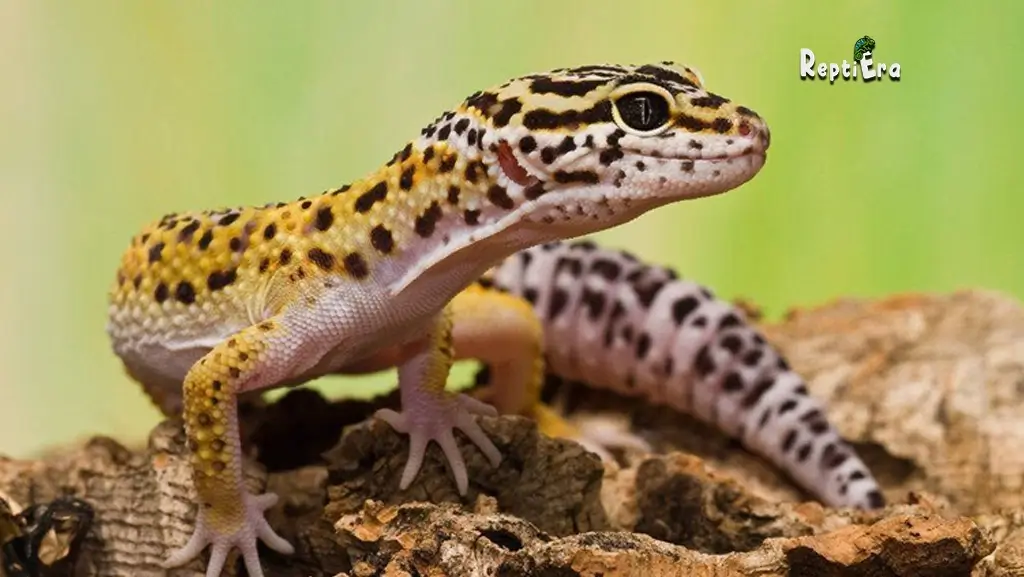
Unfortunately, when it comes to travelling by air, bringing your leopard gecko on a plane is often not an option, as most airlines prohibit reptiles in the cabin. However, some lizard-friendly carriers do allow nonvenomous reptiles to be shipped as cargo under specific guidelines.
This means your Good pet gecko might still be able to fly in the belly of the plane if you coordinate their transport according to airline cargo safety requirements, which are similar to those for car travel. The International Air Transport Association (IATA) has set rules to ensure pets have a comfortable and safe journey during flight, which include guidelines on food, water, carrier size, and temperature requirements.
If considering this option, be aware that if the airline believes your pet could be at risk, they won’t allow them to fly. Each airline has different rules based on routes, aircraft type, and the number of pets allowed in their cargo space. Airlines like American Airlines, Air Canada, Aegean Air, Air Europa, Alaska Air, Finnair (which uses a third party), and WestJet are known to facilitate such travel.
It’s always a good idea to call and check the rules before attempting to fly with your Leo. Additional information about each airline’s rules and regulations for transporting pets in cargo can usually be found through the links provided on their websites.
Can You Bring A Leopard Gecko On A Train?
Much like airlines, many train companies also don’t allow live reptiles to travel onboard with their owners. However, due to the different train services available in various parts of the world, there might be exceptions. If you’re considering taking your leopard gecko on a train, it’s advisable to contact your local train company well in advance of your trip.
Make sure to inquire about their specific policies regarding travelling with pets. Each company may have its own rules and regulations, so understanding these beforehand is crucial for a hassle-free journey with your gecko.
How to SAFELY Travel with Pet Lizards in a Car
Traveling with a lizard in a car can seem like a daunting task filled with many questions about how to transport them properly. To ensure your gecko stays warm and secure, you’ll need to pack the right equipment. With proper preparation, the process becomes surprisingly straightforward.
Whether it’s a quick trip to the vet or a longer journey due to moving house, good planning is key. Some useful tips include using a suitable carrier, maintaining the right temperature, and ensuring minimal disturbance. By following these guidance steps, you can ensure that your lizard arrives at the destination both safe and sound.
FAQs
How do I travel with a leopard gecko?
When travelling with a leopard gecko, it’s crucial to start by researching the best travel method and planning ahead. Ensure your gecko becomes familiar with their travel carrier, pay close attention to their well-being upon arrival, and pack all essentials like food, water, and heat sources to keep them safe and secure.
Can you take a leopard gecko on a road trip?
Your gecko will be fine on a road trip, even if exact temperature requirements are not met temporarily. While running air conditioning in the car is not always appreciated, many people transport their geckos when going away for summer or during long college vacations.
Can you fly with a leopard gecko?
While most airlines do not accept reptiles in the cabin or as checked baggage, it’s possible to ship your reptile as air cargo in a proper container, provided you use a compliant carrier. Be aware, each airline has different rules, so this should not pose a problem if guidelines are followed..
How do you move a leopard gecko?
To move a leopard gecko, buy a reptile-carrying container that’s big enough for them to move around but not so large that they get thrown asportation. Ensure the container is unbreakable and has small air holes for ventilation.
Conclusion
Travelling with a leopard gecko is not ideal, but sometimes necessary. Your reptilian buddy will require being outfitted with appropriate travel accommodations. A smaller carrier, secured on the cooler floor of the car to ensure it doesn’t tip over, can put your lizard at ease. It’s crucial to limit stressors like external stimuli and extreme temperatures, especially colder than 65ºF. This preparation helps in reducing their discomfort and anxiety during the journey.
While driving, ensure it’s a safely navigated ride for your gecko. Upon arriving at your destination, it’s best to make as few unnecessary stops as possible. Hold off on offering food and water until you are situated at your destination to prevent car sickness and accidents. By following these steps, both you and your leopard gecko can enjoy the ride with minimal stress.

